Docs
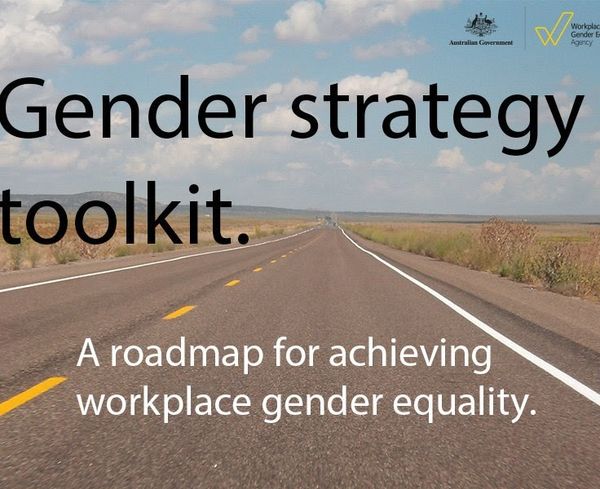
The Gender Strategy Toolkit
The Gender Strategy Toolkit, created by the WGEA (Workplace Gender Equality Agency) gives organisations the tools to diagnose performance, set goals and build a comprehensive gender equality strategy. In doing this, we can create an environment condusive to not only attracting and hiring, but also retaining female talent into tech teams. There is a lot of guidance in this kit, however the value for MCC's lies in the ability to get clarity on how your organisation stacks up, it's appetite to address gender diversity where it's needed most (ie. designing and building products and services for all) and what needs to be done to make the change.
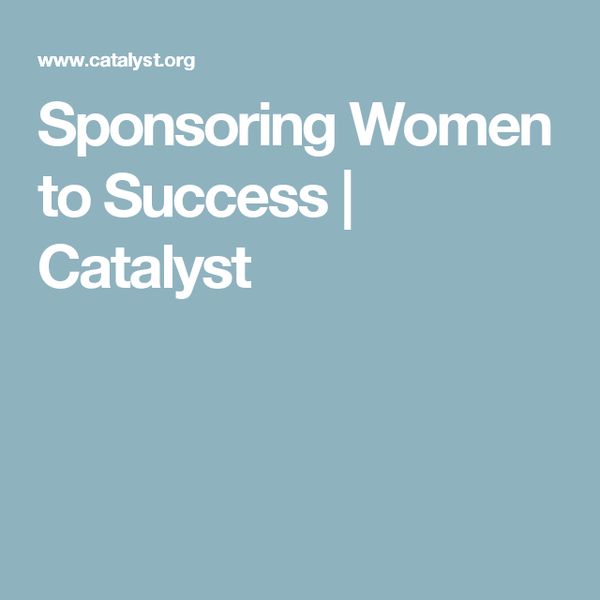
Sponsoring Women to Success
This report is the result of a study Catalyst conducted interviewing executives and high performers at six top global organisations to better understand sponsorship, its associated benefits, and how organisations can build more transparency around sponsorship. Fostering Sponsorship Success Among High Performers and Leaders is a companion tool that further outlines recommendations and potential challenges associated with sponsorship.
Catalyst is the leading nonprofit membership organisation working globally with businesses and the professions to build inclusive workplaces and expand opportunities for women and business. With offices in the United States, Canada, and Europe, and more than 400 preeminent corporations as members, Catalyst is the trusted resource for research, information, and advice about women at work. Catalyst annually honours exemplary organisational initiatives that promote women’s advancement with the Catalyst Award.

Accelerating change
A wonderfully simple resource from Male Champions of Change for CEO's and leaders, setting out clear and achievable actions that can be taken to accelerate change in your organisation.
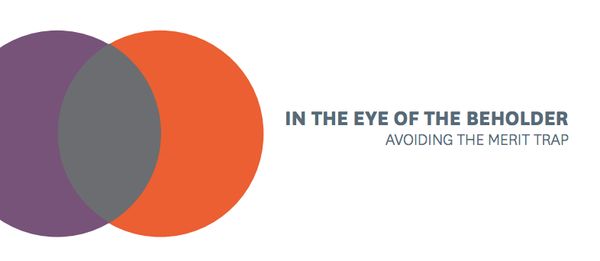
In the eye of the beholder: Avoiding the merit trap
Senior leaders in business, government, education and community are calling on all employers to confront the way they use the concept of ‘merit’ when making decisions about appointment or promotion.
This report released by Chief Executive Women and Male Champions of Change shows that although ‘appointing on merit’ sounds fair, it is often used to mask a variety of biases that prevent the progress of women.
The report argues Australian organisations must face up to the merit trap if they are to benefit from gender diversity.
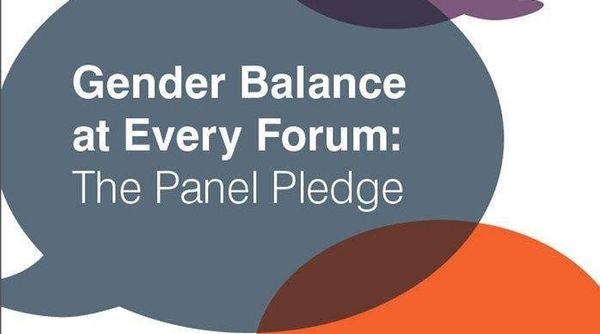
Gender Balance at Every Forum: The Panel Pledge
Just 15% of panellists in Australia are women. The Male Champions of Change, Chief Executive Women and Women’s Leadership Institute Australia are committed to calling out imbalances and pushing for an improvement. As business leaders, we pledge that whenever we are invited to be involved in or sponsor a panel or conference, we will inquire about organiser efforts to ensure women leaders are represented. This “Panel Pledge” is effective and simple to implement

Test the messages you project
The public presence or ‘face’ of organisations must be addressed as part of deeper efforts to identify and improve organisational cultures that may, or may appear to, exclude women. These can be perpetuated and reinforced through the use of outdated stereotypes, language and imagery, unjustified gender imbalances, symbols of success and barriers to entry. The discipline of regularly testing the messages you project draws the eye to a range of improvement opportunities - from small to significant. Taken together, there is considerable organisational, community and commercial upside to capitalise on. This document contains details of lessons learned through this process and offers examples of high impact actions that may be directly replicable in other organisations.
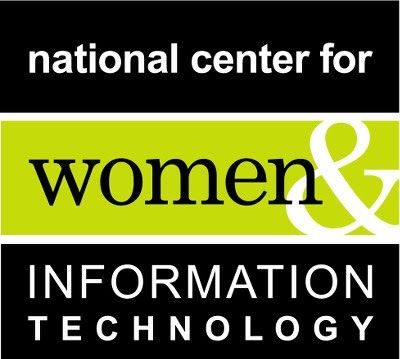
The National Center for Women & Information Technology (NCWIT)
Since its inception in 2004, NCWIT has been compiling data from existing national sources and sponsoring research projects in an effort to understand why participation is declining and how companies can reclaim the technical talent of women and other underrepresented groups. The original edition of this report, sponsored by NCWIT’s Workforce Alliance and published in 2010, brought together findings from the latest research related to technical women. This second edition (2016) updates that research, elaborating on new findings and research-based practices for increasing the representation of women and other underrepresented groups in technology.
You can also view the executive summary in an INFOGRAPHIC.
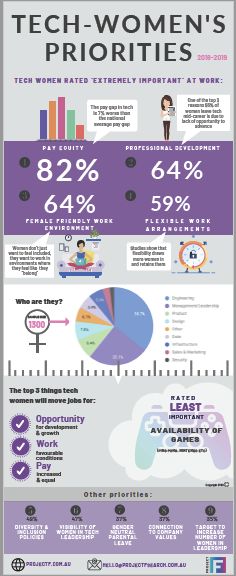
Infographic 1
INFOGRAPHIC
In 20018/19 Project F conducted a survey of 1300 women working in technology-specific careers. The intention was to uncover the differences in workplace values and priorities between women in technology careers versus women in other, non-technical vocations. It has been reported (NCWIT) that 56% of women working in technology roles leave technology (more than double the quit rate of men) mid-career due to lack of support from management, lack of ability to advance their career and poor cultural environments. This infers that women working in technology environments experience the world of work differently to women in non-technical environments and we could therefore assume priorities in a workplace will also differ.
The results do indeed validate the assumptions described above. Our data demonstrates why traditional diversity and inclusion initiatives generally do not impact gender balance in technology teams, even if improvements are achieved in other areas of an organisation.
The infographic and a summary document can be accessed on the Project F Website

Infographic 2
View and save the infographic (below) of the NCWIT Women In Tech: THE FACTS report here: https://www.ncwit.org/resources/women-it-facts-infographic-2016-update